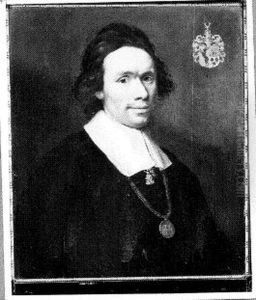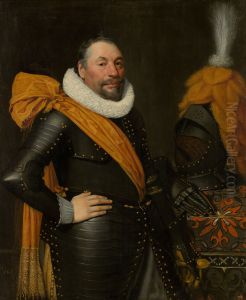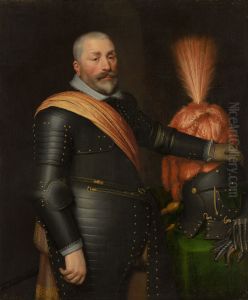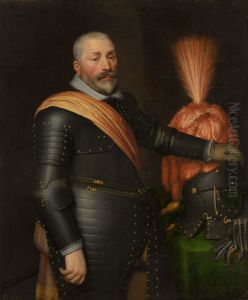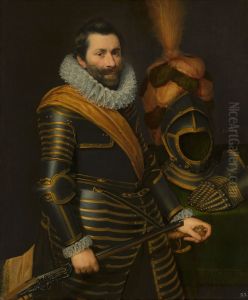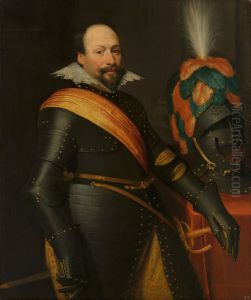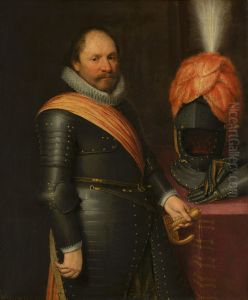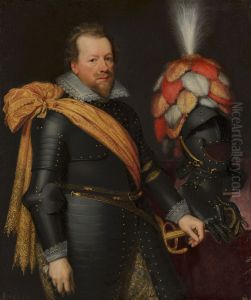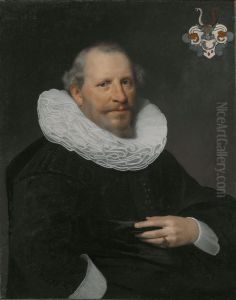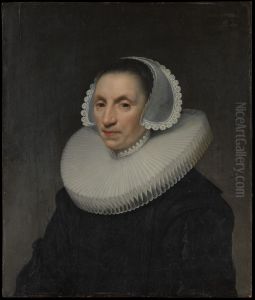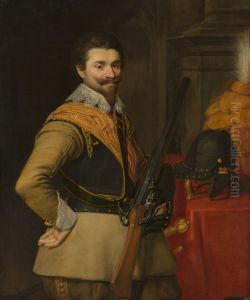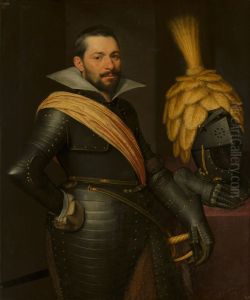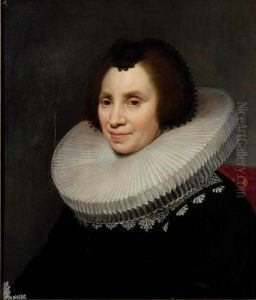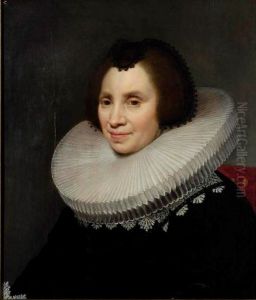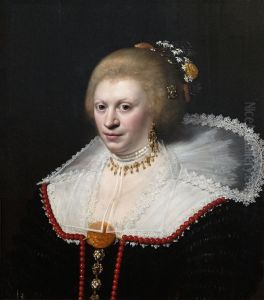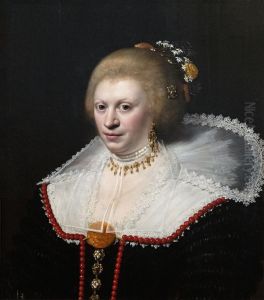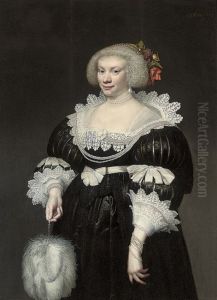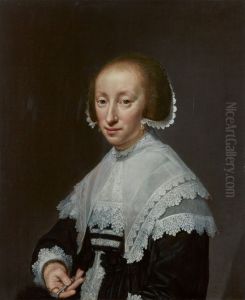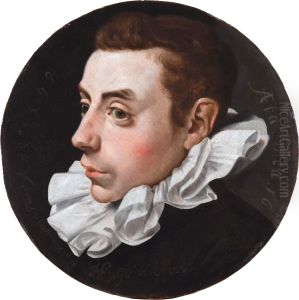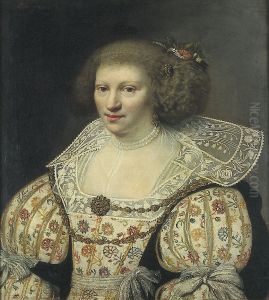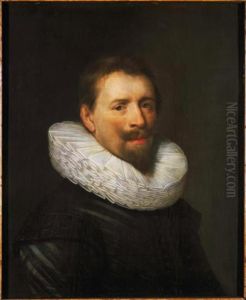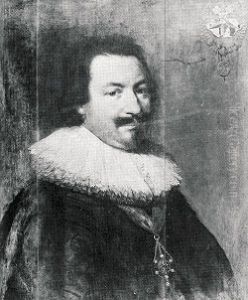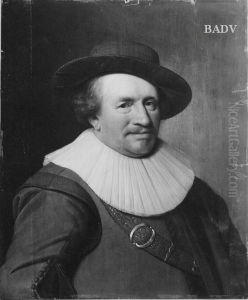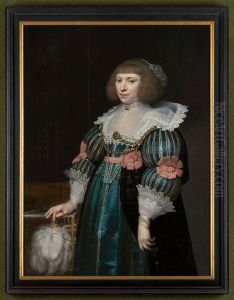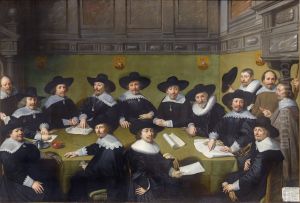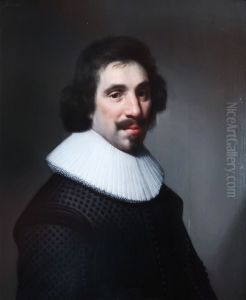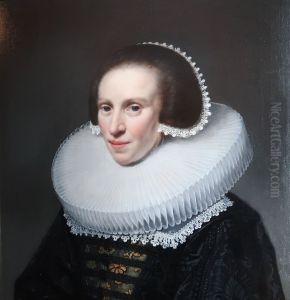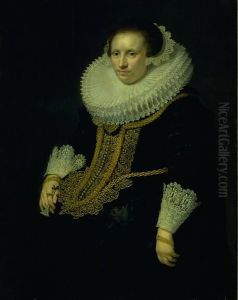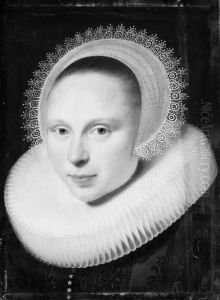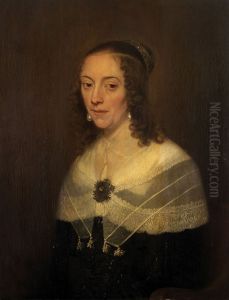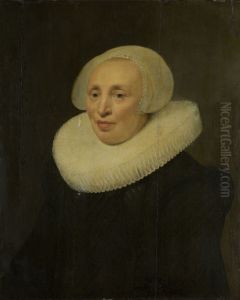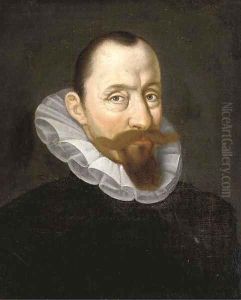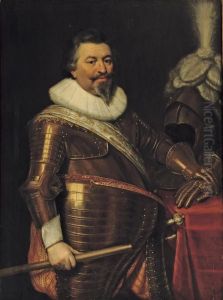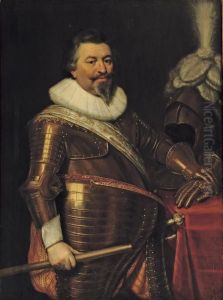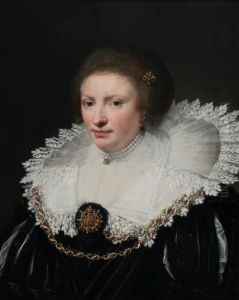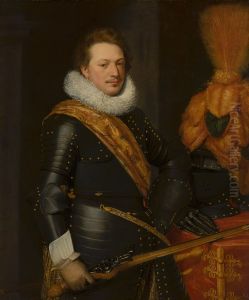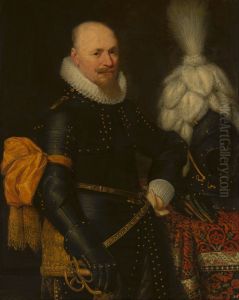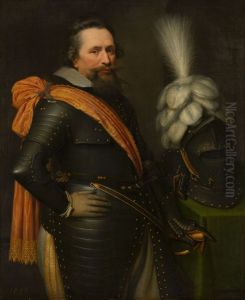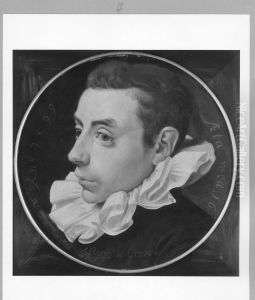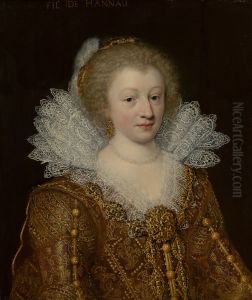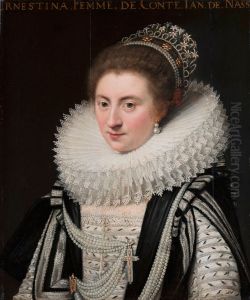Jan Van Ravesteyn Paintings
Jan van Ravesteyn was a Dutch painter who is best known for his portraits, particularly of the elite in The Hague. He was born around 1572 in The Hague, Netherlands, and was a contemporary of the Dutch Golden Age, a period of great wealth and cultural achievement for the Dutch Republic.
Van Ravesteyn began his career as an artist in the late 16th century and became one of the leading portraitists in The Hague by the early 17th century. His works are characterized by their detailed representation of clothing and jewelry, which not only reflected the wealth and status of his subjects but also serve as a testament to the fashions of the time. He was skilled in depicting the textures of fabrics and the intricate lace that was often worn by the elite during this period.
While not as famous as some of his contemporaries like Rembrandt or Frans Hals, van Ravesteyn was highly regarded in his time and received numerous commissions from the court in The Hague. His portraits were appreciated for their refined elegance and the dignified representation of his sitters. The precise date of his birth is not well documented, but his death is recorded as having occurred in 1657 in The Hague.
Throughout his career, Jan van Ravesteyn contributed significantly to the development of Dutch portraiture. His work provides a valuable insight into the social hierarchy and the cultural milieu of the Dutch Republic during the 17th century. His portraits remain on display in museums and collections around the world, offering a window into the history and aesthetics of this important period in Dutch art.
